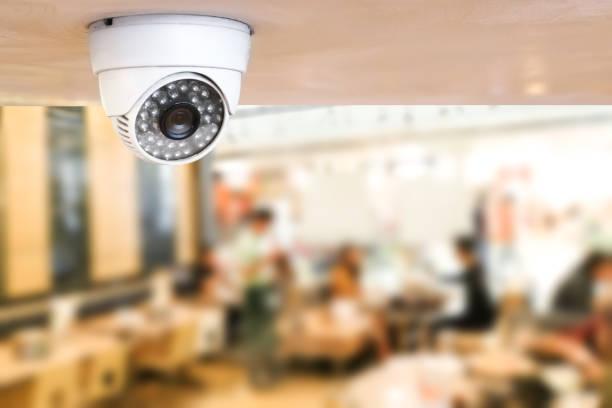NVR vs. DVR Systems: Which Is Better for Your Needs?

In the world of surveillance systems, NVR (Network Video Recorder) and DVR (Digital Video Recorder) are two prominent options for recording and managing footage. Each system has its unique set of features, and the choice between the two depends largely on your specific security requirements. Understanding their differences is crucial for making an informed decision, especially when working with the Best security company to ensure optimal safety and functionality for your setup.
What Are NVR and DVR Systems?
To begin, it’s important to understand the basic functionality of NVR and DVR systems. Both serve the purpose of recording and storing video footage, but they do so using different technologies and setups.
NVR Systems: A Modern Approach
Network Video Recorders are designed to work with IP (Internet Protocol) cameras. These systems process and encode video data at the camera level before sending it to the NVR for storage. This design allows NVR systems to offer superior image quality, advanced features, and greater flexibility in installation.
DVR Systems: The Traditional Choice
Digital Video Recorders, on the other hand, are primarily used with analog cameras. They convert analog signals into digital format for recording. DVR systems have been a staple in the security industry for many years and remain a reliable choice for those who already have an analog camera setup.
Key Differences Between NVR and DVR Systems
The primary distinctions between NVR and DVR systems lie in their compatibility, video quality, installation, and overall functionality.
Compatibility with Cameras
One of the main differences between these systems is the type of cameras they support. NVR systems work exclusively with IP cameras, which are known for their high resolution and advanced features. DVR systems, conversely, are compatible with analog cameras, which are typically more affordable but offer lower video quality.
Video Quality and Resolution
NVR systems generally deliver superior video quality compared to DVR systems. IP cameras used in NVR setups can record in high resolutions, often 4K or higher. This clarity is essential for applications where detailed footage is necessary, such as facial recognition or license plate identification. While DVR systems have improved over the years, their resolution capabilities are often limited by the analog cameras they use.
Installation and Cabling
The installation process and cabling requirements also vary significantly between the two systems. NVR systems use Ethernet cables for both power and data transmission, simplifying the setup with Power over Ethernet (PoE) technology. This not only reduces the amount of cabling required but also allows for greater flexibility in camera placement.
DVR systems, however, rely on coaxial cables for video transmission and require separate power sources for each camera. This can make the installation process more cumbersome and limit where cameras can be positioned.
Remote Access and Connectivity
Both NVR and DVR systems offer remote access, but NVR systems tend to have a more streamlined and user-friendly experience. Since NVRs are designed to work with IP cameras, they can easily connect to the internet, allowing users to access live feeds and recorded footage via mobile apps or web interfaces.
While DVR systems also support remote access, the process can be more complex and may require additional hardware or software configurations. This can be a limiting factor for users who prioritize seamless remote monitoring.
Scalability and Flexibility
When it comes to scalability, NVR systems have a clear advantage. IP cameras can be added to the network with minimal effort, making it easy to expand the system as your security needs grow. Moreover, IP cameras come in various designs and functionalities, including PTZ (pan-tilt-zoom) and fisheye cameras, which can be integrated into an NVR system.
DVR systems, while expandable, are limited by the number of channels available on the recorder. Adding more cameras may require replacing the DVR with a higher-capacity model, which can be costly and inconvenient.
Advantages of NVR Systems
NVR systems are favored for their advanced capabilities and ease of use. Their high-definition video quality, simplified installation, and robust remote access options make them ideal for modern security setups. Additionally, the ability to use wireless IP cameras provides even more flexibility, especially for businesses or homes with challenging layouts.
Advantages of DVR Systems
DVR systems offer a more cost-effective solution, particularly for users who already have an analog camera system in place. They are a reliable choice for basic surveillance needs and can still provide sufficient video quality for general monitoring purposes. For those with budget constraints, DVR systems remain a practical option.
Which System Is Right for You?
The choice between NVR and DVR systems ultimately depends on your specific needs and circumstances. If you require high-resolution footage, advanced features like facial recognition, and easy scalability, an NVR system is likely the better choice. However, if you’re looking for a more affordable solution and don’t mind the limitations of analog technology, a DVR system could be sufficient.
Conclusion
Both NVR and DVR systems have their strengths and weaknesses, and the right choice depends on your security priorities. By carefully evaluating your needs, including video quality, installation preferences, and budget, you can select the system that best aligns with your goals. Whether you opt for the modern capabilities of NVR or the tried-and-true reliability of DVR, both options offer valuable tools for safeguarding your property.
- Art
- Causes
- Crafts
- Dance
- Drinks
- Film
- Fitness
- Food
- Giochi
- Gardening
- Health
- Home
- Literature
- Music
- Networking
- Altre informazioni
- Party
- Religion
- Shopping
- Sports
- Theater
- Wellness
- IT, Cloud, Software and Technology


